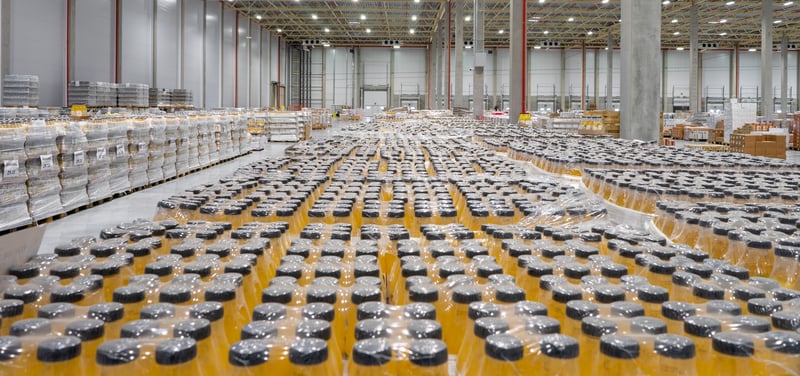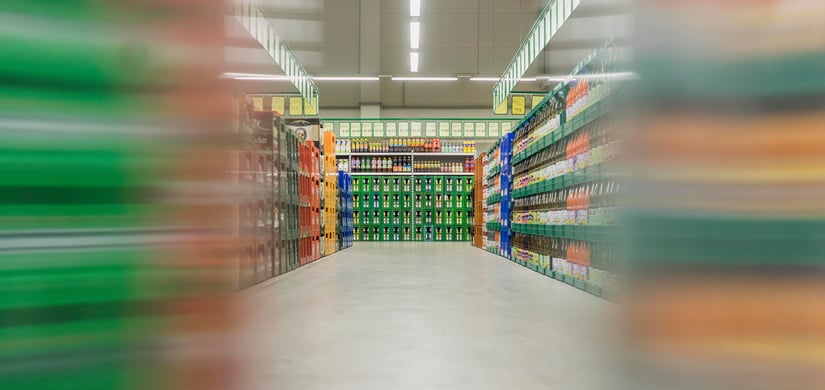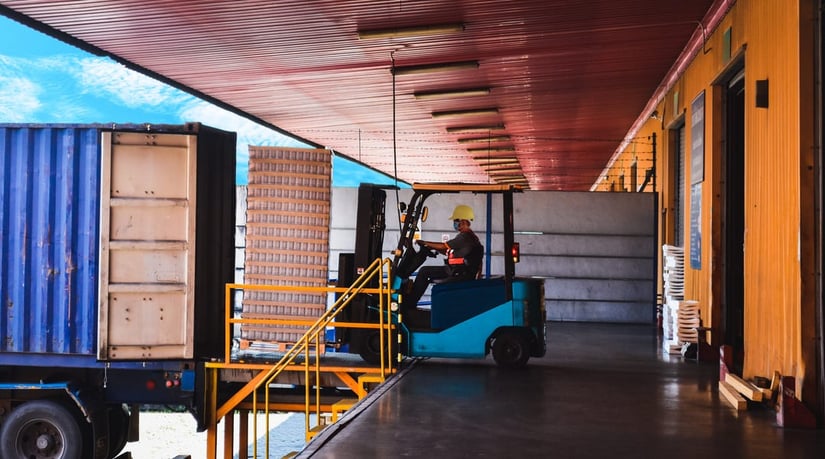How to Scale Operations to Grow a Beverage Distribution Business
Your beverage distribution business is off to a great start – your accounts are in good standing, inventory is accounted for the month, your trucks are running well, and drivers are scheduled. But you know that there’s more potential. All your efforts are going into maintaining the day-to-day operations without many resources going into a growth strategy for the business.
When scaling distribution operations, many beverage distributors worry about the extra costs and effort that come with expansion, such as adding new trucks, hiring new drivers, installing new distribution software, etc. Sure, the initial investment may be significant, but the benefits of scaling operations, if done strategically, will make your business more profitable and valuable.
This blog post will cover some strategies for how to scale your operations to make your beverage distribution business more efficient and ignite growth.

What Does it Mean to Scale Operations?
To be scalable, a system must be able to accommodate a growing load without compromising its quality, resources, or cost efficiency. An operation’s ability to scale should be evaluated by its ability to process an increasing number of orders quickly and efficiently, as well as its ability to meet demand from more customers. This means that scalability isn't only about increasing profits but also about maximizing productivity. Streamlining business processes is key to scalability as it enables a company to grow while using the same or fewer resources and forces operations to run efficiently.
Here are some steps to get started:
Understand your Distribution Channel Strategy
Your distribution strategy affects how quickly and effectively you can get products from the manufacturer to stores. The first step in improving efficiency is to pinpoint your current distribution strategy. There are five main types of distribution channels:
Direct Distribution
Products bypass the middlemen and are sent straight from the manufacturer to the consumer. It necessitates establishing direct channels, which means a business will have to make a sizable capital investment to set up its own logistics team, warehouse, and transport vehicles.
Indirect
This is when there are intermediaries between the manufacturer and the consumer. Communication issues and bureaucracy can delay product delivery. Thus, efficiency requires having a harmonious relationship between all parties.
Intensive
This involves distributing a product across as many channels as possible in the hopes that more exposure leads to increased sales. This involves continuous monitoring of market trends and responding to changing demand to avoid unsold products.
Selective
This includes limiting distribution to a small selection of retailers. This form of distribution, which has a specific customer in mind, falls somewhere between intensive and exclusive distribution.
Exclusive
In exclusive distribution arrangements, a manufacturer gives a distributor the sole right to sell their product in a specific region or territory. This strategy is usually reserved for luxury products, but not necessarily; high ticket item manufactures, such as those of industrial machine, also tend to employ this type of distribution. Exclusive distribution gives both the distributor and manufacture greater control of how the product is marketed and sold.
Each distribution strategy has its strengths and weaknesses, so it's essential to determine the most appropriate for the products you offer.
Standardize and Document your Operations
Standardizing operations is a way to ensure that everyone on the operations team knows exactly what they're supposed to do and when. Additionally, this means that every step in the process should be well documented, making it easier for you to monitor the quality of their work. It also leaves no room for guesswork and keeps the workflow smooth.
A benefit of standardizing operations is that it forces the team to evaluate the overall process. This helps managers identify areas for improvement and find better ways to do things. In the analysis, managers may discover new technologies that can help streamline processes and cut costs by eliminating inefficient or unnecessary steps.
Documentation is especially valuable when you have new hires who don't know the ins and outs of your processes yet; it becomes their primary learning source for how things are done at your company and makes onboarding faster.

Streamline Product Movement
When you're planning to scale the operations of your beverage distribution business, it's crucial to think about how your products will move from their point of origin to the customer.
A beverage distribution software can help you streamline order fulfillment since orders for certain clients may appear automatically on designated routes and schedules. Inventory management is also more effective because the software makes it easier to track and update stock as soon as orders are placed and products are delivered.
The more efficient these processes are, the better your chances are of maintaining strong customer relations and growing your business.
For product movement to be smooth and cost-effective, it's important to utilize advanced technology solutions. One technology that streamlines distribution operations and gives management greater control over the distribution process is Prism’s route accounting Beverage Distribution Software. Prism’s beverage distribution software does this by:
- Organizing driver and employee schedules and monitoring work order progress
- Planning and Mapping routes, organizing fleet, and ensuring driver and team efficiency, which helps to eliminate erroneous and missed deliveries
- Providing a channel to manage client interactions easily
- Allowing you to track your inventory and equipment efficiently
Automate Processes
To scale your distribution operations, you need to be able to process orders and customer data in a way that is easy, fast, and accurate. Automating these processes will make it easier for you to use fewer resources, reduce the risk of human error, and save time.
For the beverage distribution industry, advanced distribution software like Prism’s can help you manage customer relations. It accomplishes this by providing real-time information regarding orders placed by your customers through various channels, such as your online B2B Web Store, delivery drivers in the field during drop-offs, or inbound calls to your office sales reps. This is especially useful for small businesses because it allows them to compete with larger companies that have dedicated teams managing their customer relations. The software will also allow you to process invoices, collect payments automatically, and track shipments so that nothing falls through the cracks.
When considering scaling your DSD beverage distribution business, we strongly recommend using a beverage distribution software that provides features that could lessen your staff’s workload, improve processes, and track your business's performance.
Measure Key Performance Indicators
As you scale and grow your beverage distribution business, you will need a way to measure your progress. You can use KPIs to track and monitor the efficiency of each stage in your supply chain. These metrics will reveal which steps are particularly efficient or ineffective, allowing you to make changes that improve overall performance.
You can use productivity KPIs to monitor and improve the rate at which your operation processes are completed. In contrast, efficiency KPIs can be used to zero in on specific bottlenecks and other sources of inefficiency.
Scale with Prism’s DSD Beverage Distribution Software
Operations efficiency is crucial to success. Distribution is about getting the right product to the right place at the right time. It's a complex process that requires careful planning and execution. Many beverage distributors find that using a software system can help them manage inventory, streamline operations, and automate processes.
Prism Visual software’s platform is an end-to-end solution that is popular with many distributors in DSD. It's an all-in-one beverage distribution software that works on desktop, web, and mobile to help increase your sales and drive efficiency for your day-to-day operations.
Prism’s platform has a variety of features to manage scheduling, route mapping, and deliveries. It also tracks and manages inventory on trucks and multiple warehouses, processes orders and issues invoices, and records payment collections, whether through cash, checks, credit cards, ACH, or DEI. The right technology will simply improve the customer experience and save the company time and money by automating recurring tasks as well as providing reports about essential data such as sales analytics, product consumption, and industry trends.
Conclusion
As you consider the level of automation in your distribution, also think about how it extends into the sales and field distribution operations in your process. For DSD, route/field sales, and e-commerce, it’s going to get increasingly difficult to track your various levels of distribution. That’s where an end-to-end route accounting software, like Prism, can transform your automation strategy.
Ultimately, scaling operations is all about understanding your business and its requirements. There are many ways to scale your beverage distribution business, but they all require you to take an honest look at what is and isn’t working. Once you have that information in hand, then it becomes a matter of making the right decisions based on relevant KPI’s and data to get where you want to go.
Learn more about how you can scale your beverage distribution with Prism today.
In this free report template, you'll be able to quickly manage monthly inventory, distribution, and other KPIs.
Topics from this blog: Direct Store Delivery DSD Distribution
Back

